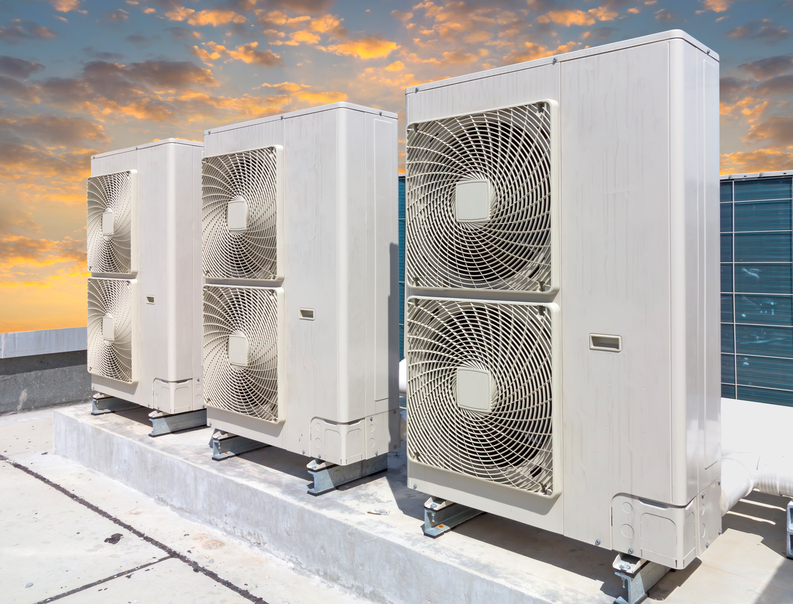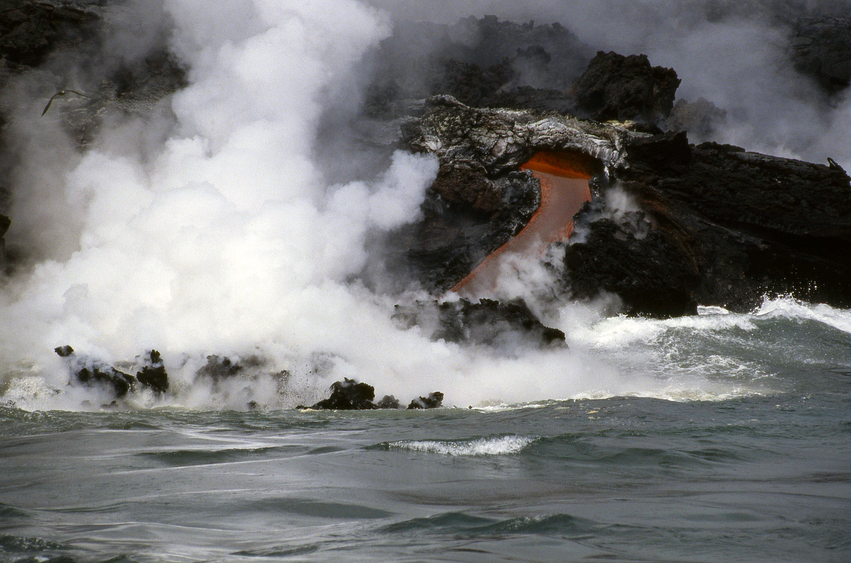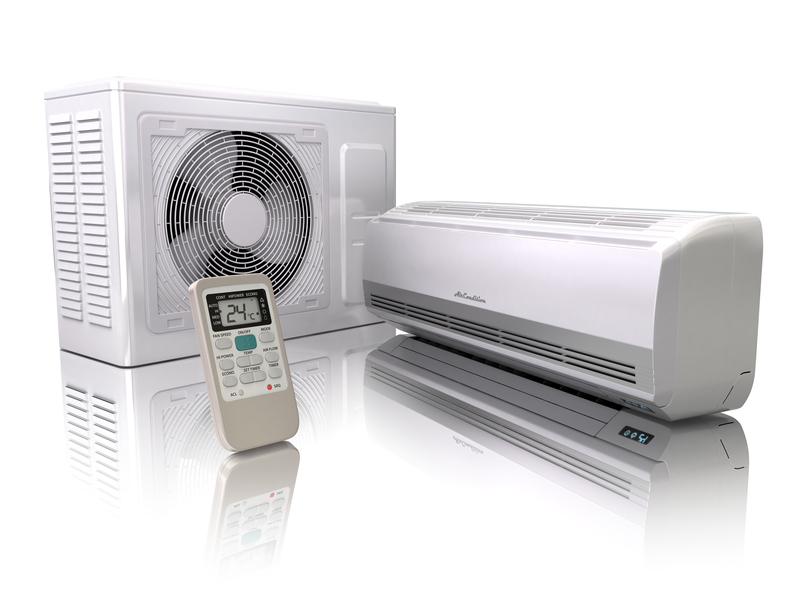HVAC Basics 15 PDH Discount Package 2
HVAC Chilled Water Distribution Schemes (M05-008)
HVAC Concepts and Fundamentals (M06-012)

This online engineering PDH course discusses the applications of chiller systems.
A chiller can be generally classified as a refrigeration system that uses either a vapor compression or absorption cycle to cool. Both the absorption and the mechanical compression systems have the evaporation and condensation of a refrigerant in common. In both systems, the refrigerant evaporates at low pressure to absorb heat and then condenses at higher pressure to reject heat to the atmosphere. Both systems require energy to raise the temperature of the refrigerant for the heat rejection process.
The difference is that the mechanical chillers use reciprocating, centrifugal or screw compressors that are powered by electric motors whereas in the absorption cycle uses heat (usually steam or direct fire) to raise the refrigerant temperature. Mechanical chillers are most commonly used in residential and commercial buildings whereas absorption systems offer an excellent choice for industrial applications there waste heat recovery is an essential element of the process.
This 4 PDH online course is applicable to mechanical engineers, design and construction personnel, technical staff and facility personnel who are interested in gaining a better understanding of chiller systems.
This PE continuing education course is intended to provide you with the following specific knowledge and skills:
- How the mechanical compression cycle operates
- What are the different types of mechanical compressors
- What is vapor absorption refrigeration cycle, its components and applications
- What do the terms efficiency and coefficient of performance mean
- What are the functions of the different components of a chiller system
- How is heat rejection achieved through contact and non-contact type cooling towers
- What are the different types of refrigerants and their effects on environment
- What are the principle guidelines in sizing, costing and selecting an appropriate chiller
- Why is water treatment important in closed and open systems
- What are the basic methods and procedures for testing, adjusting and balancing (TAB) of chiller systems
In this professional engineering CEU course, you need to review Appendix C, "Chiller Systems" of the US Corps of Engineers Construction Engineering Research Laboratory (USACERL) technical report 99/20, May 1999.
Upon successful completion of the quiz, print your Certificate of Completion instantly. (Note: if you are paying by check or money order, you will be able to print it after we receive your payment.) For your convenience, we will also email it to you. Please note that you can log in to your account at any time to access and print your Certificate of Completion.

This online engineering PDH course discusses the history of chilled water distribution systems and the development of "variable primary flow system". Problems such as low delta-T syndrome associated with the chilled water pumping schemes are defined and also discussed. Finally, this course compares the advantages and disadvantages of primary-secondary and direct-primary pumping schemes.
In large commercial and industrial systems, chilled water system serves as means to transfer heat from building spaces to the refrigeration system. Initially, when energy costs were low, constant volume and primary-secondary systems provided a stable and simple operation of the chillers and distribution systems. However, as energy costs increased, particularly in the late 1970s, the efficiency of the chillers and the costs associated with operating the distribution system became more important. As a result, the need for new schemes to improve chiller performance and reduce energy costs drove the HVAC industry to advance chilled water technology, particularly in the manner that chilled water is delivered.
This 5 PDH online course is applicable to mechanical and HVAC engineers, process engineers, architects, building designers, contractors, energy auditors, facility managers who are interested in gaining a better understanding of HVAC chilled water distribution schemes.
This PE continuing education course is intended to provide you with the following specific knowledge and skills:
- The basic hydronic principles i.e. relationship of chilled water flow rate v/s cooling load and the energy savings due to adjustable speed pumps
- How do constant volume chilled water systems different from primary/secondary arrangement
- What is low delta-T syndrome and how it affects the chiller loading
- What are the causes and mitigation measures to prevent low delta-T syndrome
- Why distributed pumping arrangement is better than headered arrangement for constant flow systems
- How do primary/secondary chilled water systems create hydraulically independent loops.
- How to size the de-coupler bridge
- The characteristics of control valves and why 2-way valve is better than 3-way valve in variable flow systems
- How do the variable primary flow system compare with primary/secondary system in terms of cost and energy
- The importance of design tube velocity and rate of chilled water flow variations in variable primary flow systems
In this professional engineering CEU course, you need to review the course document titled "HVAC Chilled Water Distribution Schemes".
Upon successful completion of the quiz, print your Certificate of Completion instantly. (Note: if you are paying by check or money order, you will be able to print it after we receive your payment.) For your convenience, we will also email it to you. Please note that you can log in to your account at any time to access and print your Certificate of Completion.

This online engineering PDH course provides the basic concepts of human comfort, temperature-humidity relationships, the principles of psychrometrics and modes of heat transfer you need to design new HVAC systems and/or to retrofit existing systems. It also covers the methodology of heat loss/heat gain calculations and the concepts of noise and acoustic treatment.
HVAC helps keep people comfortable and healthy by maintaining good indoor air quality, humidity and comfortable temperatures. Designing for comfort requires integrated knowledge of human physiology, heat transfer, psychrometrics, and mechanical systems. Most professionals don't learn this stuff in school or on the jobsite, but are expected unrealistically to meet your physiological needs and wants for indoor environmental quality based predominantly on the skills of assembling building components. This is the #1 reason why over 50% of occupants are unsatisfied with their thermal environments.
The second part of this course "HVAC Components and Systems", which focuses on HVAC heating and cooling equipments, air and hydronic distribution and the various types of HVAC systems, is posted separately under Course No. M08-004.
This 6 PDH online course is applicable to mechanical engineers, design professionals, service technicians, operational & maintenance personnel, energy auditors and facility engineers and all personnel who are interested in gaining a better understanding of the concepts and fundamentals of HVAC.
This PE continuing education course is intended to provide you with the following specific knowledge and skills:
- Thermal Comfort: Understanding the considerations of human comfort, variable affecting thermal comfort, and related terminology such as mean radiant temperature, wind chill factor, heat index, operative temperature, effective temperature and comfort zone.
- Psychrometrics: Learning how to read seven terms dry-bulb temperature, wet-bulb temperature, dew-point temperature, relative humidity, humidity ratio, specific enthalpy and specific volume on psychrometric chart. It also describes 4 air-conditioning processes viz. mixing; sensible cooling and heating; cooling with dehumidification; and humidification.
- Modes of Heat Transfer: Learning heat flow through solids and air including the terminology and relationships between conductivity, conductance, resistivity, U-factors etc.
- Heat Gain and Heat Loss in Building: Familiarizing with the heat loss/gain calculation procedures; understanding basic concepts and methods to determine cooling loads, effects of windows, walls, roofs and partitions on loads, and basic types of internal loads; learning how to find and use local climate data; and understanding the effects of air infiltration and ventilation.
- Annual Energy Use Calculations: Understanding the concept of balance point temperature and heating and cooling degree days in determining annual energy costs.
In this professional engineering CEU course, you need to review the course document tilted, "HVAC Concepts and Fundamentals".
Upon successful completion of the quiz, print your Certificate of Completion instantly. (Note: if you are paying by check or money order, you will be able to print it after we receive your payment.) For your convenience, we will also email it to you. Please note that you can log in to your account at any time to access and print your Certificate of Completion.